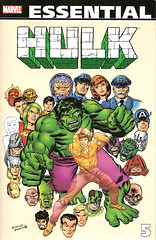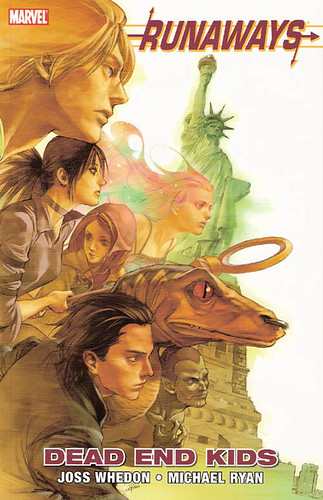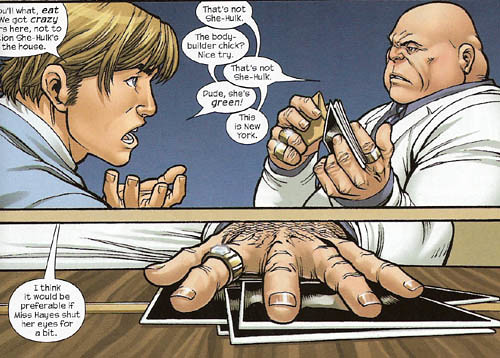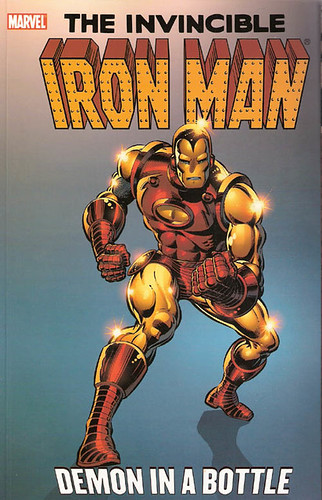Batman: Strange Apparitions
Collects: Detective Comics #469-79 (1977-8)
Released: November 1999 (DC)
Format: 176 pages / color / $12.95 / ISBN: 9781563895005
What is this?: A memorable — or so they say — Batman run of the ‘70s.
The culprits: Writers Steven Englehart and Len Wein and pencilers Marshall Rogers and Walt Simonson
Batman: Strange Apparitions is a seemingly random slice of late ‘70s Batman stories — more than a year’s worth of Detective Comics in one volume.
Ostensibly, it’s a showcase of writer Steve Englehart’s Detective run. According to the book’s introduction by Englehart, after he was hired away from Marvel, Englehart had planned to make this run his comics swan song. With penciler Walt Simonson, Englehart planned to tell a story involving Dr. Hugo Strange, Boss Rupert Thorne, and Silver St. Cloud. Simonson bowed out after two issues, so Marshall Rogers was brought in.
 Englehart thinks pretty highly of his work, which he says formed a bit of the basis of the first Batman movie. (I don’t see it, even if Vicky Vale is supposed to be a proxy for Silver St. Cloud, but I’ll take his word for it.) But is it really that good?
Englehart thinks pretty highly of his work, which he says formed a bit of the basis of the first Batman movie. (I don’t see it, even if Vicky Vale is supposed to be a proxy for Silver St. Cloud, but I’ll take his word for it.) But is it really that good?
There are definitely some iconic Batman stories here. The Joker’s battle to patent his Joker Fish (fish chemically treated to have the Joker’s grotesque smile) is one of the great Batman stories, rightly reprinted in “Best of” anthologies and the origin of one of the best Batman: The Animated Series episodes. The battle with Hugo Strange is nothing special, but its aftermath is exciting: Strange, who has discovered Batman’s secret identity, dies rather than give it to Rupert Thorne, then haunts Thorne until he confesses his crimes.
But the Penguin and Dr. Phosphorus stories are Silver Age stories with Bronze Age trappings, and Len Wein’s Clayface III story, which wraps up the collection, could have come a Spider-Man book, with its tragic villain, self-pitying hero, and near empathy for the villain’s plight. Batman’s battle with Deadshot is fun, involving a giant electric typewriter (no manual typewriter in the ‘70s, no no), but most of the story is given over to Bruce Wayne’s romance with Silver St. Cloud.
That romance is the thread that ties the entire volume together. Its believability and impact is what could transform the book from tripe to treasure. Unfortunately, I’m not sure where I stand on the matter. Bruce quickly falls for Silver, and vice versa; her dedication to him helps save him from Hugo Strange. Fine; that makes sense. But in a moment that truly does link Strange Apparitions to Tim Burton’s Batman, Bruce reveals his secret identity after Silver has figured it out. And immediately after, she’s written out. No consequences! No romance! I don’t know if this sort of storyline was common back then, but it’s not the type plotting I expect from a premier title like Detective Comics, although it’s common in consequence-free, continuity-light mini series and annuals.
I’m not entirely convinced by the art, either. Both Rogers and Simonson draw certain characters as dynamic, important, beautiful — Batman and the Joker, for example. They seem almost to be drawn in a house style. The other characters … are not. They seem to be appearing in another book, by other artists. The rest of the art almost seems locked in an even older style. Sometimes everything comes together, atmospheric and beautiful. Other times it looks like a mishmash. There are more of the former than latter, but it doesn’t take many of the latter to spoil the whole bunch.
Also: Why aren’t there any covers? I find this a major problem. At least when the Dark Horse Chronicles of Conan lacked the covers, you know it was probably because of rights issues. Is it some sort of artists’ compensation difficulty that prevented DC from showing the original covers? Did they just run out of room? There are worse sins when reprinting old comics, but this is a quite noticeable one.
I’m not as impressed by this volume as I think I should be. However, there are too few trade paperbacks covering this interesting period, after Batman starts being taken seriously and before Crisis. For that reason, I’m giving Strange Apparitions a bit of a bump on the rating.
Rating: ![]()
![]()
 (2.5 of 5)
(2.5 of 5)
Labels: Batman, DC, Detective Comics, Gotham City, Len Wein, Marshall Rogers, Steve Englehart, Walt Simonson





 Which brings us to
Which brings us to  (2.5 of 5)
(2.5 of 5)  But ultimately, War and Pieces disappoints, for the same reason
But ultimately, War and Pieces disappoints, for the same reason  Instead,
Instead,  I can’t really put a more definitive finger on what bothers me about Michael Ryan’s artwork; although I don’t like it, his style fits the title very well — modern, slightly manga, lean and glossy. On the other hand, sometimes his work is a little too manga for me to take seriously; for instance, he uses the comically oversized sweat beads on characters’ temples at moments of stress. And there are moments of art dodginess as well, as when the Kingpin displays a hand with five fingers but no thumb. However, I suppose I have to give Ryan tentative approval.
I can’t really put a more definitive finger on what bothers me about Michael Ryan’s artwork; although I don’t like it, his style fits the title very well — modern, slightly manga, lean and glossy. On the other hand, sometimes his work is a little too manga for me to take seriously; for instance, he uses the comically oversized sweat beads on characters’ temples at moments of stress. And there are moments of art dodginess as well, as when the Kingpin displays a hand with five fingers but no thumb. However, I suppose I have to give Ryan tentative approval.  The Surfer was a personal favorite of co-creators Stan Lee and Jack Kirby, with
The Surfer was a personal favorite of co-creators Stan Lee and Jack Kirby, with 
 Not as well as Iron Man fans might hope. The story gets its power from the idea: hero as alcoholic. But liquor isn’t Tony’s only enemy; no, he has to battle rival industrialist Justin Hammer. And boy, does Hammer school him.
Not as well as Iron Man fans might hope. The story gets its power from the idea: hero as alcoholic. But liquor isn’t Tony’s only enemy; no, he has to battle rival industrialist Justin Hammer. And boy, does Hammer school him.  In v. 2, Loeb completes a story that feels like part of a miniseries. That’s not a complaint, just a description; Hush, v. 2 has a scope that feels bigger than what is usually allowed in an ongoing title without a crossover. Loeb and Lee bring in plenty of villains and allies, raising the stakes and making the events feel like they matter. That’s tough to do, and it can be overdone if it’s desperate — see
In v. 2, Loeb completes a story that feels like part of a miniseries. That’s not a complaint, just a description; Hush, v. 2 has a scope that feels bigger than what is usually allowed in an ongoing title without a crossover. Loeb and Lee bring in plenty of villains and allies, raising the stakes and making the events feel like they matter. That’s tough to do, and it can be overdone if it’s desperate — see